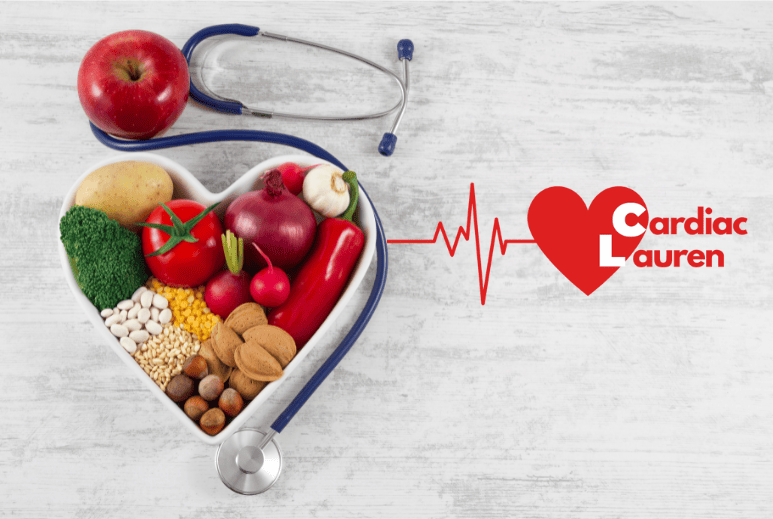When it comes to promoting good heart health, the decisions that we make around food are paramount. While eating a varied diet is beneficial for our health, it can help to take a closer look at the separate components of certain meals and recipes, and always consider healthier options. Making healthier food swaps is easy and will go a long way in making your heart stronger, so have a read of our smart switch ideas and update your cupboards accordingly!
Here are your 15 food swaps for a healthy heart:
1. Replace Full-Fat Dairy with Low-Fat or Non-Dairy Alternatives
Switch from full-fat dairy products to low-fat or non-dairy options like skim milk, low-fat yoghurt, or plant-based alternatives such as almond milk or soy milk. There’s a huge variety on the shelves these days, and plant-based milks are better for the planet.
2. Swap Minced Beef For Lentils
Minced beef – and other associated red meats can be high in fat. Due to their size and texture, lentils are a great substitute for minced beef and are a rich source of magnesium and fibre which promote heart health.
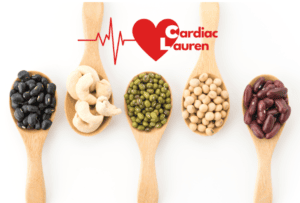
3. Choose Whole Grains over Refined Grains
Opt for whole grain alternatives like whole wheat bread, brown rice, quinoa, or whole grain pasta instead of refined grains to increase fibre intake and support heart health.
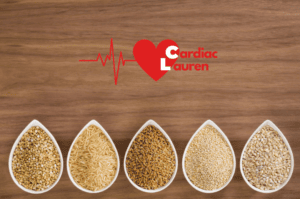
4. Replace High-Sugar Desserts with Dark Chocolate
Instead of indulging in high-sugar desserts, enjoy a small piece of dark chocolate (with at least 70% cocoa content) that contains beneficial antioxidants and flavonoids.
5. Replace Butter with Healthier Fats
Substitute butter with healthier fats like olive oil or avocado oil when cooking, or use spreads made from olive oil or avocados for a heart-friendly option. Avocados are 60% monounsaturated fats, which research says helps to lower blood pressure and protect against heart disease.
6. Ditch Sugary Cereal
Aim to avoid sugary cereal and be sceptical of brands that merely describe themselves as healthy. For example, granola often uses marketing phrases such as ‘high protein’ and ‘natural’, yet the product actually contains a lot of sugar and saturated fat. Healthier breakfast alternatives include porridge, muesli and shredded whole-grain cereal.
7. Switch Muffins and Cakes for Malt Loaf
A healthier option to cakes and muffins is a slice of malt loaf or a fruited teacake, which are lower in fat and sugar than their higher calorie counterparts. Brands such as Soreen are good, but it’s always better to make your own when you fancy a treat.
8. Say No to Fizzy Drinks, and Choose Tea and Coffee Instead
Fizzy drinks contain huge amounts of sugar and should only be consumed as a treat. Instead, opt for water, black or green tea or coffee. These beverages contain clever chlorogenic acids, which protect the heart against cell damage associated with heart disease. Remember: drink caffeine in moderation and watch out for sugary, high-fat drinks from coffee shops.
9. Opt for Salmon over Steak
Red meat is no good when it comes to keeping your heart healthy, so swap your steak fillet for a salmon fillet next time. Due to its high omega-3 and fatty acid content, salmon can help lower cholesterol levels, reduce artery inflammation and maintain blood pressure levels.
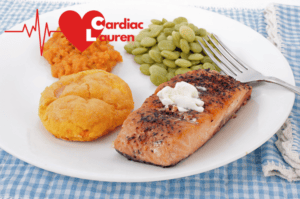
10. Swap White Sides for Green
The next time you’re considering a side dish, or ordering one from a restaurant, choose green dishes over white ones, such as bread, potatoes, chips or rice. Instead, opt for vegetable sides such as grilled artichoke, broccoli or a well-seasoned side salad. See ideas more ideas here.
11. Try Sweet Potatoes
Sweet potatoes are delicious, and contain more vitamins and antioxidants than white potatoes. These include beta-carotene and vitamin C, which reduce inflammation associated with heart disease.
12. Switch from Ice Cream to Greek Yoghurt
We all know that ice cream should only be an occasional treat. Next time you fancy it, try a bowl of Greek yoghurt with a small drizzle of honey, berries or chia seeds. The high protein of Greek yoghurt content supports muscle growth and promotes satiety, making yoghurt a satisfying snack or breakfast option.
13. Ditch Tinned Soup
Canned soups often contain high levels of sodium as a preservative and flavour enhancer, as well as more sugar and fat than fresh alternatives. Take control of your salt, sugar and fat intake by making your own soup. It’s easy, and recipes can be found here.
14. Poach your eggs, don’t fry!
Fried eggs require oil, and therefore are higher in fat than poached or boiled eggs. Poached eggs are delicious on toast or as part of a low-carbohydrate breakfast. Just remember to go easy on the salt!
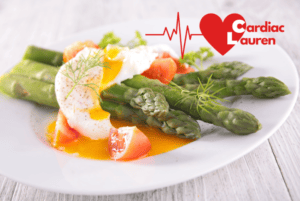
15. Eat the Whole Fruit, Not the Juice
Fruit juice loses fibre and many nutrients such as antioxidants during the juicing process. It also contains very high amounts of sugar. On the other hand, eating whole fruit – say, an orange rather than a glass of orange juice – gives you more nutrients and makes you fuller for longer.
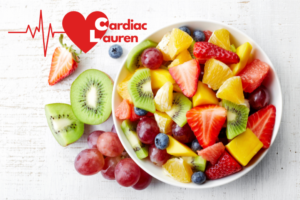
While some treats and snacks can be enjoyed in moderation, these healthy food swaps will lead to greater vitality and support your heart health. Even if you don’t make these changes overnight, try a few of them out and see which ones to add to your meal ideas. Enjoy!
